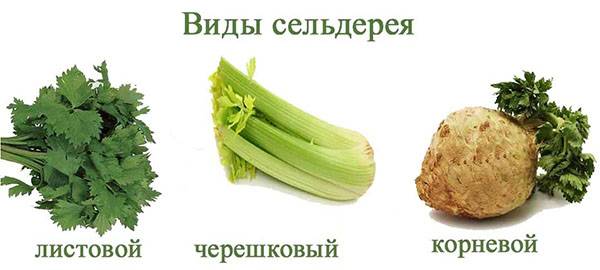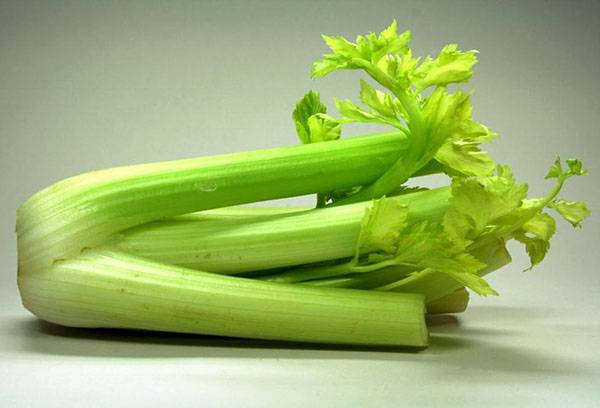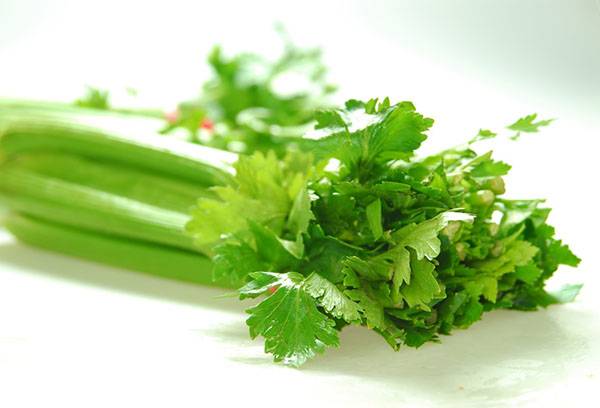How to clean leaf, petiole or root celery?
Content:
Many people have not yet learned how to use it in cooking, hence a number of questions arise: how to choose the “right” plant and how to clean celery? The answer to each of them comes with experience, but it is better to stock up on theoretical knowledge in advance.
Types of Celery
Celery is of three types.
- Sheet. The root crop is undeveloped, the plant spends the main forces on the ripening of green foliage. The leaves contain essential oils, which are very beneficial for the body. Salads are prepared from them and added to soups.
- Petiole. The root crop is also underdeveloped. The plant has juicy thick stems. Their diameter reaches 4 cm. It is the stems that are used for food: they make salads, stews, freshly squeezed juice.
- Root. A round-shaped root crop is formed underground, which reaches 20 cm in diameter. The taste of the pulp is bittersweet. The root crop is dried, added to soups or salads.
How to choose celery?
If you have not previously encountered the preparation of this product, you still have a lot to learn about it. Peeling celery depends on its condition: how young and fresh the plant is. In order not to waste money in vain, find out a couple of secrets on how to choose the "right" celery.
- Foliage. Greens should have a saturated bright color. Be sure to feel the leaves, they should be elastic, not sluggish. The plant should emit aroma.
- The stalks. They should look full of juice. If you cut or break, you will hear a crunch. If the petiole is covered with scratches, has a weathered appearance, the green color has acquired a brown hue, before you stale product.
- Root crop. The root should be hard and not crush when pressed with your fingers. The surface should be as smooth as possible. Do not buy a root crop covered with “knots”. Pay attention to the color of the upper leaves: the green color indicates the freshness of the plant.
When buying, pay attention to whether the plant has released an "umbrella" with seeds. In this case, you risk buying overgrown celery. It will taste bitter, and the petioles and root vegetables will be very hard.
Celery leaf
Leaf celery does not need to be peeled. Leaflets are used in cooking as an addition to fresh vegetable salads, stews or first courses. The chopped greens are dried using seasoning. In addition, greens are added to pickles. However, in many countries they believe that only in fresh form does it retain all the “magical” healing properties. Like parsley or dill, it is enough to separate the branches from the main stem and rinse under cold running water.
How to peel stalk celery?
When cleaning stems, the hostesses have much more questions than when processing a leaf plant. Culinary opinions on this subject also differ. Some believe that it is necessary to remove the top layer of the stem, while others assure that this procedure is not necessary. Just the same it depends on the freshness and age of celery.
Tip
In addition to the peel, the lower part of the stem (the first 3 cm) must be removed and the upper shoots, if any, are cut off.
The young petiole growing inside the bunch is not covered with thick coarse fibers. Its skin is thin and almost invisible. In this case, it is enough to rinse the stems under hot water. If the plant grows a little, the stalk is covered with a thick film. It is stiff to the touch, so it must be removed with a knife (it is more convenient to use a peeler).
How to clean root vegetables?
This part of the plant raises the most questions among housewives. And this is not at all strange.The fruit has a rough surface; when sold, it is covered with earth. As for its cleaning, there is also a debate among cooks. Some argue that it is enough to wash away the whole earth - and the fetus is ready for further cutting. This opinion is erroneous, because only a well-washed root crop with a removed skin can be eaten.
Buying a root with a smooth surface, you will not lose a large amount of pulp during cleaning. Nodules interfere with fast and economical skin pruning. Rinse off all the dirt under running water first, take a sharp knife, peeler and chopping board.
- A large sharp knife cuts off the upper and lower parts of the fetus.
- It is unlikely that you will need the whole root crop for cooking some kind of dish. Cut the necessary part. Place the remaining root crop in the refrigerator or in a dark, cool place.
- It is necessary to cut off the skin and damaged areas. This is convenient to do with a peeler or a sharp knife. Do not leave spots or dots; the pulp should be white and clean.
- Take away the spongy part of the root, as it is tasteless and will not add flavor to the dish. However, if you cook celery for weight loss, you need to leave it, as it is a coarse dietary fiber and valuable for cleaning the body.
- After processing, rinse the root crop again and start cutting. The shape of the slices depends on the dish you are preparing.
- The cut root crop tends to darken when interacting with oxygen. If you are making a harvest, then the sliced fruit must be poured with water, like potatoes.
All skills come only with experience. Knowing how to handle this or that product, you will facilitate the cooking process. Celery is a storehouse of vitamins and minerals. It is easy to prepare and process. This plant should be a frequent guest in every kitchen.


